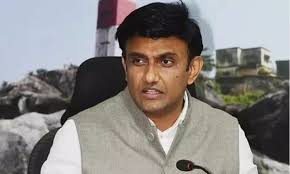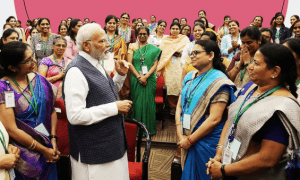Is a dam really needed at Mekedatu?
The Mekedatu reservoir, being actively proposed by the Karnataka government now (a DPR is in progress), will submerge 47 square kilometres (4700 hectares) of the finest riverine forests in
this country and 2 square kilometres (200 hectares) of agricultural/village land (compensation to be paid to land holders at the rate of Rs 65 lakhs per acre, as per information from a source).
Where will the project come up?
According to officials with the Water Resource Department, the project will require acquisition of the land from the watch tower of Mugguru Forest up to the outer regions of the foothills near Hanur Forest near Kollegal in Chamarajanagar district. Mugguru Forest is located in the Karnataka-Tamil Nadu border and 9.1 km away from Mekedatu.
The area for the proposed dam is located between Mekedatu and a popular tourist destination — Sangama — where the Kaveri and Arkavathy rivers meet. The supposed reason is to fulfil the drinking water needs of Bengaluru with a reservoir in this region. The estimated capacity for the dam is 67 TMC.
What are the possible dangers of the Mekedatu dam project?
From initial discussions with wildlife and forest professionals, it seems that the likely collateral are as mentioned below:
• Hundreds of people will be displaced by submergence. Six villages — Bommasandra, Galebore, Madivala, Kogge Doddi, Nelluru Doddi and Sampatagere Doddi — will be submerged if the project becomes a reality.
• Man-elephant conflict will increase (possibly manifold), resulting in deaths of people and elephants, as this is an area that apparently has considerable elephant movement
• In the years of water shortage, conflict can arise between the states, resulting in possible damage to lives and property.
• Trees could be felled (on assumption of 100 trees per hectare) 470,000, with a number of them being well over 100 years old, including Terminalia Arjuna, which is an iconic and flagship tree of the Kaveri river
• Loss of fauna (particularly reptiles and mammals) can occur.
• Some heritage structures – an Anjaneya temple and a British-built power station will be submerged too.
The list is a long and depressing one.
Is there any realistic gains from this project?
The gains are questionable. For starters, about 37-40% of water brought from the Kaveri river is lost in leakages; if 20% of the leakage was plugged, water supply would increase by about 100 MLD.
Finally, the water quality in the Kaveri river itself is poor. The Karnataka State Pollution Control Board’s own data says it is category C for most of the stretch, but independent studies have shown it to be worse. Water quality in the Arkavathy river is particularly bad: category E at Kanakapura town. In terms of priority, this needs urgent remedy. The Arkavathy river meets the Kaveri river at Sangama just before Mekedatu (though much of the water is dammed near Kanakapura).
Guest Author: Gopa




























 WhatsApp us
WhatsApp us